By: Jenn Wirtz, Restaurant owner & beer drinker
As Seen in the West Park Times
The ingredients are simple: water, barley, hops, and later yeast, that come together and make what we love… Beer is now over a $110 billion market. The process was refined in Germany before making its way all across the world, including to Cleveland! Beer, for me, has not only fascinating history, but it inspires a way of life.
My first sip of beer was at age three and it was a DAB. My Opa drank it and when I could walk, to get him to chase me in the backyard, I would steal his DAB, run with it, and sip the bitter beer in its green bottle to make everyone laugh. That was the 80’s and we, after all, are Germans. However, it was approximately 5000 years ago we can find Babylonian hieroglyphs that reveal ale recipes. In 1999, an archaeologist digging in Egypt put a 2,700-year-old urn under a microscope and deciphered an ale recipe. You can taste what early beer drinkers might have drunk with Dogfish Head’s Midas Touch. Sweet and almost like a wine, it is a high abv beer fit for kings.
However, leave it up to the Germans to invent what we know today as beer. Hops in the 13th century was a game changer that was a process from Northern Germany and then bottom-fermentation in the 16th century gave birth to the lager beer brew. Only a little over 200 years ago Bavarians brought yeast into the mix. My German ancestors gave way to the idea of mass production with their every expanding polished process. It was in the 1800s that the perfection of lagers changed beer brewing from a home hobby to an industry. Many of those recipes have not changed and our always available on draft at Der Braumeister. Beers like Paulaner, Krombacher, and Weihenstephaner still follow the purity laws of 1516 and the traditional German lager recipes.
Finally, without borders, walls, and little restriction 1.7 million beer drinking immigrants poured themselves into the United States in the 1840s. An estimated 75% of them were German and Irish. The Germans brought the skilled brewing practices and the Irish brought their drinking habits. Ales were within the colonies dating back to 1588; however, it was that wave of immigration that gave birth to beer as we know it and breweries like the legendary German Anheuser-Busch.
Cleveland, like other cities, was no exception. Some accounts have its first brewery opening in 1852. However, with the surge of drinking came the temperance movement. Yet, with the Civil War, early thoughts of prohibition were put on hold- but, in 1920, things changed and prohibition was a thing. As we all know, when someone tells us NO or CAN’T- it sometimes, not always inspires rebellion. And in 1929, Frank Herzog opened a delicatessen in West Park, Cleveland. However, the confectioner’s shop & deli was only a part of the building, next door to that deli with its high windows, unable to see in from street level, was a men’s only German club. It was one of Cleveland’s first taverns and we now know it to be one of Cleveland’s oldest bar and restaurants as Der Braumeister. But that is a history for another day. So in the words of Franklin D. Roosevelt in 1933 said after repealing prohibition: “I think this would be a good time for a beer.” In the words of your author: “Prost”
